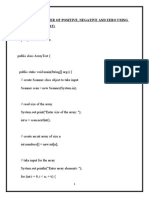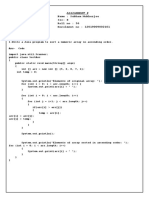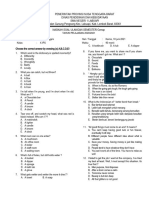0% found this document useful (0 votes)
37 views11 pagesUnique Java Programs Exam Preparation
jsvadgrgtgtrtrgrtgrtgtrgrggggr
Uploaded by
aravindhit56Copyright
© © All Rights Reserved
We take content rights seriously. If you suspect this is your content, claim it here.
Available Formats
Download as PDF, TXT or read online on Scribd
0% found this document useful (0 votes)
37 views11 pagesUnique Java Programs Exam Preparation
jsvadgrgtgtrtrgrtgrtgtrgrggggr
Uploaded by
aravindhit56Copyright
© © All Rights Reserved
We take content rights seriously. If you suspect this is your content, claim it here.
Available Formats
Download as PDF, TXT or read online on Scribd
/ 11























































































